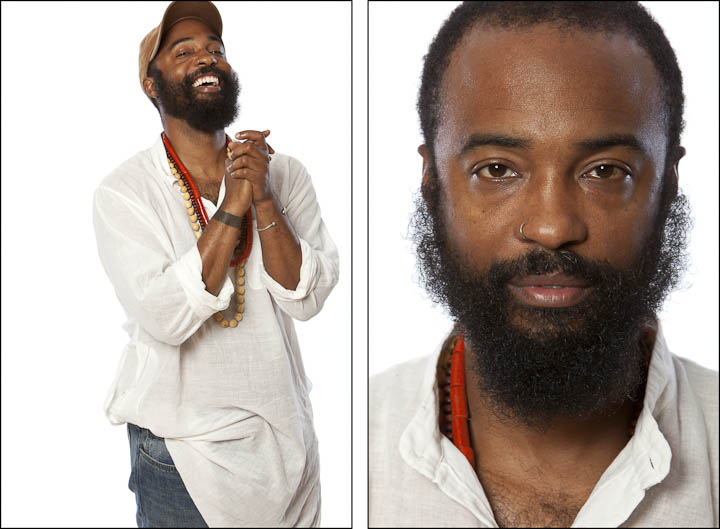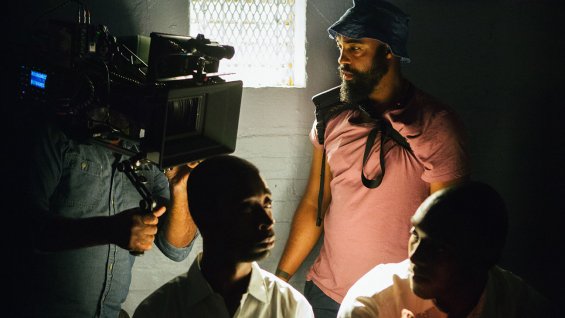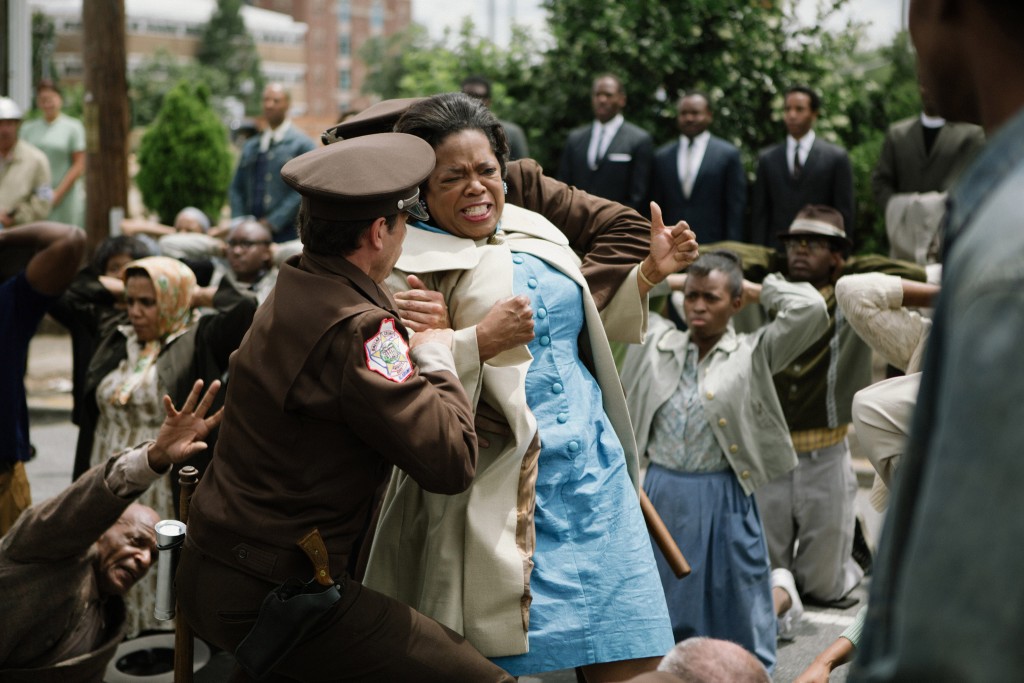
Happy Hump Day POU!
Today’s featured Cinematographer is Bradford Young.
Bradford Young is one of the hottest Cinematographers in the business today. Born July 6, 1977, he is a native of Louisville, Kentucky. He moved to Chicago at age 15 to live with his father where he became inspired by the artistic works of Romare Bearden, Jacob Lawrence, and Aaron Douglas. He studied film at Howard University, where he was influenced by the legend Haile Gerima.
Few working cinematographers today trained like Young, who lives in Washington D.C. and spent years honing his photographic skills on subjects of color.
“I went to a majority black elementary school, a majority black high school, I moved to Chicago when I was 15 and lived on the Southside in a majority black community,” he said. “All of the artists that my grandparents collected were black artists. All of the books on my grandparents’ shelf, my father’s shelf, my mother’s shelf, were about black people. My world, until I got to D.C., was really about blackness.”
At Howard University, Young studied under Haile Gerima and soaked up the work of DPs who came before him. “Ernest Dickerson, who was Spike Lee’s preferred cinematographer, went to Howard,” he said. “Arthur Jafa, who was Spike’s cinematographer on Crooklyn and was Julie Dash’s cinematographer on Daughters Of The Dust, went to Howard. Malik Sayeed, the incredible, talented, gifted god of lighting black folk, went to Howard as well. It was a treasure chest of references for me to imitate, mimic, and pay homage to. My training was geared toward exposing my community — this particular community.”
Young’s feature films as director of photography include White Lies, Black Sheep (2007), Pariah (2011), Restless City (2011), Middle of Nowhere (2012), Ain’t Them Bodies Saints (2013), and Mother of George (2013). His most recent work includes the 2015 Oscar nominated Selma.
Young prefers shooting with available light. For example, in Pariah, for a nighttime bedroom scene, he shot using only Christmas lights and an Ikea lamp with a red lampshade.
Young has won Cinematography Awards at the Sundance Film Festival twice. In 2011, he won for his work on Pariah. Two years later, he won for his work on both Mother of George and Ain’t Them Bodies Saints.
NPR recently interviewed Bradford about his outstanding achievements:
Just two months into 2015, cinematographer Bradford Young is already having a big year. Two acclaimed movies, Selma and A Most Violent Year, bear his name as Director of Photography.
“It’s an interesting time,” he laughs.
He sat down for a chat with NPR’s Arun Rath, who started by asking about the striking depictions of violence in Selma.
“You have to be very delicate,” Young says, “because as much as film has the ability to raise humanity, it also has the ability to put us down.”
Young remembered that Selma director Ava DuVernay wanted to show the “violence against the black body” that was common in the period the film takes place. “We tried to use speed as a way of giving us a different rendition of the moment,” Young says, explaining the use of slow motion in sequences like the bombing of the 16th Street Baptist Church that killed four young girls.
“It is violent, but at the same time, it is visual. These little girls were beautiful, but what was happening to them was not beautiful,” he says. “And I think we had to straddle that dichotomy of making pretty pictures, but also reminding us that those moments in time were extremely, extremely violent and grotesque.”
There’s a moment in Selma when the protester Annie Lee Cooper (played by Oprah Winfrey) is tackled by a pair of troopers. Young’s camera hugs her all the way to the ground; it was literally strapped to her body.
“We didn’t want you to be able to let go. We didn’t want you to be able to walk away, or turn your head away,” he says. “We wanted to indict the audience. We wanted the audience to know that we all, in some way and somehow, have contributed to the social atmosphere.
“I think oftentimes with violence in movies, it’s easy for us to turn our head because we’ve found a way to make them entertaining. But we didn’t want them to be entertaining. We wanted them to be teaching tools. We wanted them to be the groundwork for us to feel something so that we don’t repeat what was happening in the film.”
The camera became a participant throughout the movie, hanging at face-level with Dr. King, often peering over shoulders or bouncing ever so slightly as its operator walks alongside the protesters.
“It was just about never retreating, always staying dangerously close to Martin Luther King,” Young says. “And I think it’s a perspective on King that most of us who eulogize him in a very particular way would want to have, which is to be in his face, to be there with him, to hear his words, to feel his breath on your neck, to see his soul in his eyes. Film allows us to be just that much closer.”
With Hollywood’s diversity issues in the news, Young says that it’s a bittersweet time to be a black cinematographer.
“As much as this moment is interesting for me, in the sense that I’m able to go off and shoot bigger movies [and] work with directors I’ve only dreamed about working with,” he says, “when I step on a set and I don’t see myself [represented], that’s something that I have to contend that I feel like other folks on the set don’t have to contend with.”
A recent report by the Ralph J. Bunche Center for African American Studies at UCLA found that 82% of directors and 88% of writers in Hollywood were white in 2013.
“I’m just hoping in the 21st century, especially for black folk — with our presence in literature, with our presence in art, with our presence in music — that in film culture, we begin to see ourselves,” Young says. “Our stories are important. … If you’re cutting image-makers of color out of the process, then I think you’re missing a key experience in the American experience. How can we call ourselves fully realized, fully cultured Americans if we don’t know where our next-door neighbor comes from?”




